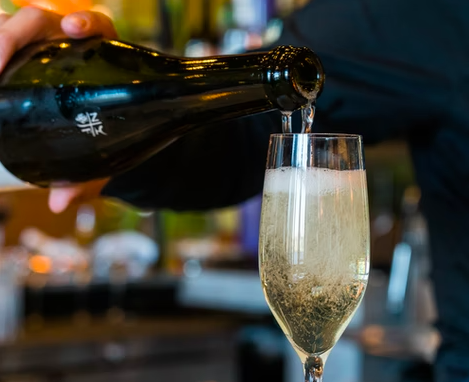Dry January
Sorry, we are closed until January 15, 2025. After that we will be open again on Thursday, Friday and Saturday. You can still order via the webshop: appelsenperen.amsterdam
Rezha Baktali writes a nice article about Calvados in De Telegraaf of January 12, 2022. He travels to Normandy to learn more about the special drink. And that suits me well: 'For me this year it will be a glass of calvados!' Read the entire article here and see which delicious calvados we have in our range.
Through REZA BAKHTALIA Jan 12. 2022 in Telegraaf – LIFESTYLE
When I talk to friends about calvados, they often think it's brandy or a Spanish drink. Not surprising since this drink based on apple and/or pear looks the same as cognac made from grapes. The name also sounds more Spanish than French, while a French department has been called that for centuries.
How the department got that name remained a mystery for a long time, even for the French. Until a researcher from the University of Caen found a map from 1675 on which the word 'Calvados' was written twice off the Normandy coast: a reference to two sandbanks.
Only a strange bush grew on these sandbanks that made them distantly resemble a bald head (calva in Latin).
To avoid the sandbanks, the sailors looked out for those two 'bald heads': calvados. By the way, you do pronounce the 's', an exception in French.
But what exactly is it? Calvados is an eau de vie (alcohol content: 40 to 45%) obtained by distilling apple cider. First, apples are pressed and allowed to ferment, resulting in alcohol. The cider is then distilled once or twice in copper stills.
We travel to Normandy to see the practice. A beautiful, hilly area. The town of Deauville in particular is worth a visit, and restaurant Les Vapeurs should not be missed.
Pere Magloire
But I digress! Père Magloire in the town of Reux is a famous Calvados brand that saw the light of day in 1821. They are proud of their 200th anniversary. We meet cellar master Jean-Luc Fossey who mixes barrels of different ages into the desired product. You could call him a sort of taste wizard.
Fossey explains the process. “It's not just about the apple juice, but also the skin and fungi that are on the fruits. We don't have to do anything else, the fermentation of the apples takes place automatically. We roughly use four types of apples: sweet, bittersweet, sour and tart.”
These apples come from orchards spread across the departments of Calvados, Manche and Orne and parts of Eure and Mayenne. Calvados is a protected product. There is a minimum of two years aging in oak barrels. The geographical area has been officially established, the apples and pears used are defined cider varieties and strict rules apply to pressing, fermenting, distilling and maturing.
Among the millions of apple trees in the area are traditional standard orchards where cows graze under the branches of the trees, as well as dwarf orchards where the fruit-laden branches reach down to the ground. When autumn arrives, the apples are harvested.
soft accents
Fossey: “The apple cider is distilled into eau de vie. After two years in oak barrels we can sell it as calvados. The longer it matures, the softer the drink becomes. The inside of the oak barrels is also roasted, adding a touch of vanilla to the alcohol in addition to warm accents.”
The ages on the bottles refer to the youngest part of the blend and calvados (like cognac) has four classes: VS, Vieux, VSOP and XO, with the youngest part being at least two, three, four and six years old respectively.
During the tasting it is almost impossible to spit out the different variants. The older the blend, the softer, fuller and creamier the calvados will taste. Just a bit more pleasant and less 'burning' than cognac, I think. The young version is delicious as an aperitif, the older version is better to drink after dinner.
The drink also goes well with alcoholic desserts, tarte tatin, foie gras and French cheeses. You can also make delicious cocktails with it. For me it will be a glass of calvados this year!
Sorry, we are closed until January 15, 2025. After that we will be open again on Thursday, Friday and Saturday. You can still order via the webshop: appelsenperen.amsterdam

Three good friends tasting the local ciders while on holiday in the UK: that's where Ramborn's story begins. During the tasting, the friends shared stories about their parents and grandparents, who used local apples to produce their own cider. This is how the idea arose to create a

The sparkling wine: originally considered a failed project, today a festive and popular drink. Did you know that these bubbles are not always added afterwards, but can also be created by natural fermentation? This method is also called 'pétilant naturel' or 'pét-nat' by makers. This method involves bottling the